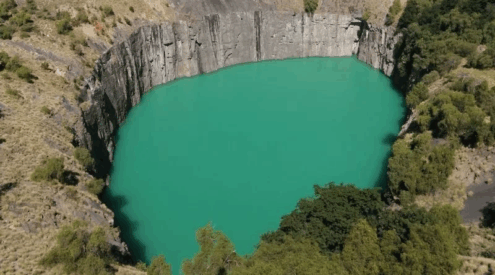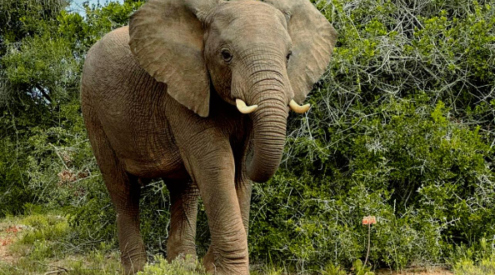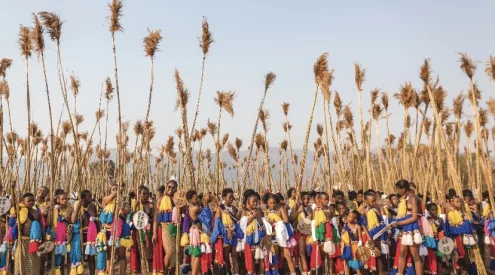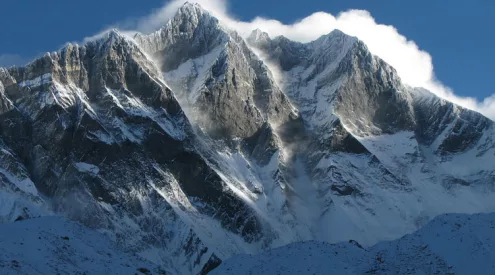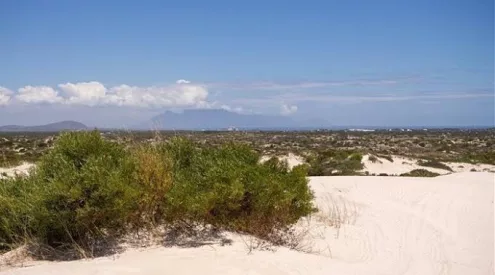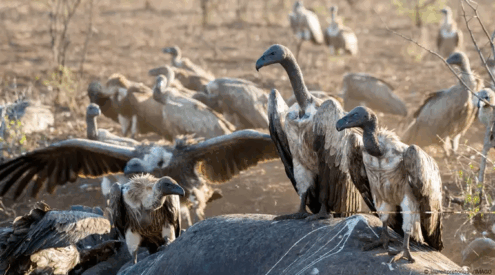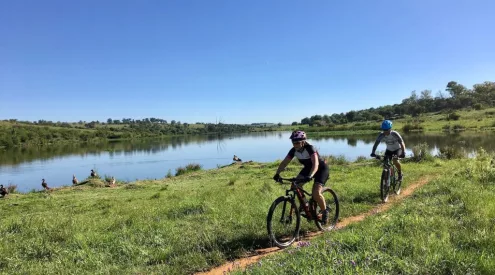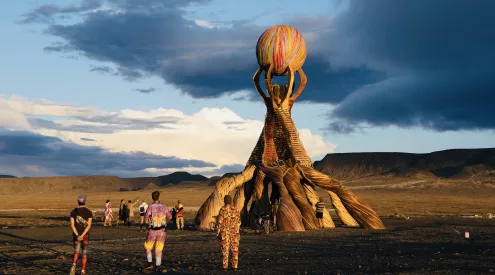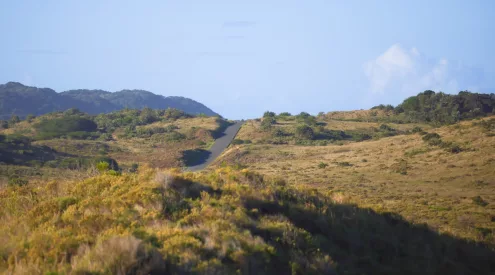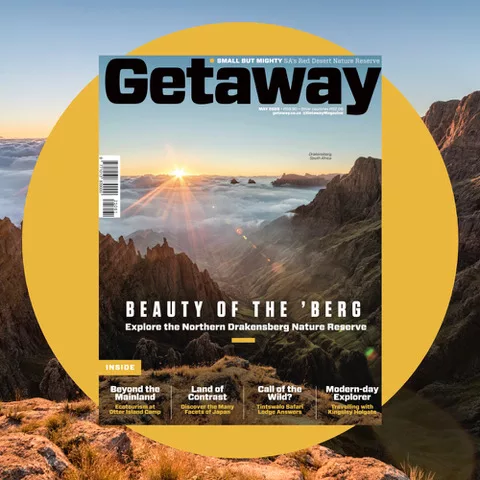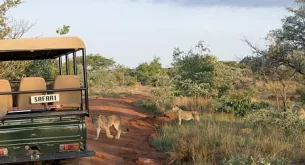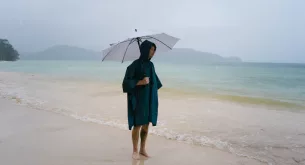Stretching 220 km along KwaZulu-Natal’s lush coast, the iSimangaliso Wetland Park—aptly named ‘miracle’ or ‘ wonder’ in Zulu—cradles ten distinct ‘jewels’. Each offers something special. Here’s your guide to exploring them all.
ALSO READ: New nature reserve in KZN to protect endangered species
1. Kosi Bay
At the Mozambican border, the Kosi Bay lake system is fringed with mangrove trees and reeds. The Thonga people have sustainably fished here for centuries using woven traps. Its beaches host leatherback and loggerhead turtles nesting. The lake system—Amanzimnyama, Nhlange, Mpungwini, and Makhawulani—links via channels to the Indian Ocean. Boat trips from Lake Nhlange to Makhawulani are stunning. Snorkelling and visits to the Thonga fish traps are a must.

Image: iSimangaliso Wetland Park
2. Coastal Forest Reserve
Accessible by 4×4, this wild stretch, the Coastal Forest Reserve, hides gems like Rocktail Bay and Mabibi, where tall dunes adorned with strelitzias spill into coral-rich, blue waters. Mabibi is a great spot for diving and snorkelling, as well as Lala Nek, known as one of the most secluded and prettiest beaches. At Black Rock, anglers can have a go at braving sea fly-fishing. Between June and November, humpback whales breach offshore, adding an entirely new element of magic here.

Image: iSimangaliso Wetland Park
3. Lake Sibaya
Lake Sibaya is South Africa’s largest freshwater lake, spanning 7,750 hectares. It is home to KwaZulu-Natal’s second-largest population of hippos and crocodiles and it’s a birder’s paradise, with 279 species, including the elusive Pel’s fishing owl and African fish eagles. The lake’s white-sand beaches, accessible only to a fortunate few, are out of this world. No rivers feed or drain Lake Sibaya, making it a vital lifeline for local wildlife during dry spells.

Image: iSimangaliso Wetland Park
4. Sodwana Bay
Ranked among the world’s top dive sites, swim amongst 1,200 species of fish in Sodwana’s reefs. Glide past ragged-tooth sharks, technicolour corals, and—if luck strikes—the prehistoric coelacanth which was rediscovered here in 2000. Beyond diving, the bay offers year-round excitement, with bottlenose dolphins patrolling the coast and humpback whales migrating past from June to November. On land, its proximity to uMkhuze’s Big 5 territory makes this jewel a gateway to the ‘Big 7.’

Image: iSimangaliso Wetland Park
5. uMkhuze
This 40,000-hectare reserve is one of Africa’s oldest. Established in 1912, uMkhuze’s 40,000 hectares homes the Big 5 and over 420 species of birds.
The Sycamore Fig Forest, with 400-year-old trees, is a wonderland. Game-viewing hides at kuMasinga and kuMahlala pans provide front-row seats the wild while iNsumo Pan hosts pink-backed pelican colonies. Visiting this jewel feels a little like stepping back in time.

Image: iSimangaliso Wetland Park
6. False Bay
False Bay, on Lake St Lucia’s west side, was underwater 60 million years ago. We finds its traces in marine fossils. Framed by Nibela and Nhlozi peninsulas, False Bay features a number of habitats—woodland, thornveld, savannah, shoreline, and a rare sand forest—ideal for spotting birds, butterflies, antelope, and primates. Explore via two 8km trails, Dukandlovu and Mphophomeni. Nile crocodiles and hippos making swimming in some areas unsafe but boating and fishing are fine.

Image: iSimangaliso Wetland Park
7. Charters Creek
Charters Creek is the travellers’ resting spot on the strip of land called Western Shore – created by the Nhlozi Peninsula that juts into Lake St Lucia. This spot is a firm favourite with anglers and bird-watchers who enjoy the old-world simplicity and peacefulness of a lakeside camping. Set on a bluff looking eastwards over Lake St Lucia, it provides opportunities to view forest birds as well as a variety of aquatic birds, both fresh-water and marine.

Image: iSimangaliso Wetland Park
8. Lake St Lucia
Lake St Lucia, the heart of iSimangaliso Wetland Park, is a UNESCO World Heritage Site and Ramsar Wetland since 1986, stretching 80km long and 23km wide. It sustains ecosystems that spans dunes, tropical seas, lake, coral reefs, beaches, uMkhuze swamps, savannah, and thornveld. Over 50% of KwaZulu-Natal’s water birds feed here, with 155 fish species, 71 using the estuary as a nursery. 2,180 flowering plants thrive here and so do antelope like waterbuck, reedbuck, kudu, nyala, impala and duiker.

Image: iSimangaliso Wetland Park
9. Cape Vidal
Cape Vidal, on the Eastern Shores, offers the best of bush and beach. Spot humpback whales, dolphins, rare turtles, whale sharks, marlin, and sailfish. Loop roads from St Lucia to Cape Vidal offer bird-watching, game viewing, and scenic lookouts. The area is home to elephant, rhino, buffalo, crocodile, hippo, hyena, leopard, and smaller game. Freshwater pans, swamp forests, and grasslands attract unique birds like pink-throated twinspot, rufous-bellied heron, and Rudd’s apalis. Visit Lake Bhangazi, eMfabeni, or kuMziki Lookouts for breathtaking vistas.

Image: iSimangaliso Wetland Park
10. Maphelane
Maphelane, nestled at the southern tip of the Lake St Lucia Estuary, boasts the shores of the uMfolozi River. The majestic Maphelane dune, South Africa’s highest sand giant (183m) offers a hike that rewards with breathtaking panoramic views of the ocean and the river’s mouth.

Image: iSimangaliso Wetland Park
Follow us on social media for more travel news, inspiration, and guides. You can also tag us to be featured.
TikTok | Instagram | Facebook | Twitter
ALSO READ: New safari and sea adventure route launches in KZN

